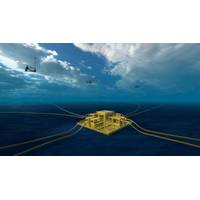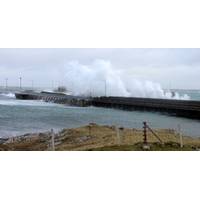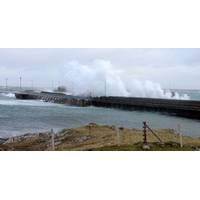
Global Underwater Hub Forms Taskforce to Improve Subsea Cable Reliability and Performance
of reliable subsea cables. “The performance and reliability of these cables are therefore crucial to delivering the UK’s clean offshore power ambition and global net-zero targets. But these cables are highly susceptible to damage during installation and operation, leading to substantial insurance claims and costly downtime.”GUH has identified cable performance and reliability as a major issue that needs to be solved, especially as floating offshore wind, which requires even more complex dynamic cables, becomes an increasing percentage of the overall installed base. Mr Gordon added: &ldquo

Floating Wind and the Taming of Subsea Spaghetti
considerations, he cites the O&G trend to have more infrastructure subsea including projects such as Åsgard and Jansz-lo.In fixed offshore wind, the cost of cable supply and installation can account for 8-12% of overall CAPEX costs, and cable-related incidents account for around 80% of insurance claims. Without developments such as Subsea Collector, these numbers could be higher for floating wind.Michael Bjerrum, CCO and Co-Founder of simulation, modelling and project management software company Shoreline Wind, says that planning for the interdependencies associated with the hook-up of

GUH: Subsea Cable Failures Threatening Offshore Wind Expansion
; to the success of offshore wind and the energy transition, but that failure of these cables is all too common, to the point that the cost of insuring them is becoming prohibitive.GUH chief executive, Neil Gordon, said: "It’s estimated that around 85% of the total value of offshore wind insurance claims relate to subsea cables. Insurers are losing money underwriting cables with the average settlement claim in the region of £ 9 million. Brokers have warned that the high number of cable claims is affecting capacity and coverage and the cost of repairs typically runs into millions, with

Has Captain Cook’s Ship Endeavour Been Found?
looked like.A replica of the Endeavour. (Photo: Australian National Maritime Museum) Sifting through historical recordsThen we move onto historical research, analyzing records of all ships lost in that general area.We may draw on newspaper reports from the time, salvage records and marine insurance claims. Indeed, marine insurance was the original insurance because shipwreck was once so common and so costly.We might look for court records to see if there was a dispute about the disposal of shipwreck material in that area at some point.Historical attempts to salvage valuable material may also
Osbit Builds Cable Test Rig for Subsea
the performance and reliability, of subsea cables.According to a press release from the company, the Northumberland-based Osbit designed and built the 15-tonne cable fatigue test rig to ORE Catapult’s specifications.With cable-related failures accounting for up to 80% of offshore wind project insurance claims, the rig enables the testing of offshore array and subsea cables to improve their efficiency and resilience, supporting the development of next generation wind farms and associated electrical infrastructure.The development of floating wind represents an important economic opportunity for UK

OTT Hydrometry & the New Monitoring Network for Scottish Ports
be able to assess the impact of wind, temperature and waves to protect harbor operations staff. Severe weather berthing conditions can also potentially cause damage to ferries and the structures within the ports, so again, detailed data on localized conditions can help prevent accidents and support insurance claims when necessary.” Emphasizing the growing need for data, McHardie said: “In recent years, severe weather events appear to have become more frequent and they seem to develop faster; for example, since the monitoring network was installed, we have recorded a sudden drop in temperature

New Monitoring Network for Scottish Ports
be able to assess the impact of wind, temperature and waves to protect harbor operations staff. Severe weather berthing conditions can also potentially cause damage to ferries and the structures within the ports, so again, detailed data on localized conditions can help prevent accidents and support insurance claims when necessary.” The availability of live data on port conditions therefore enables the ferry masters to make better informed decisions at an earlier stage, thereby saving time, fuel and costs. It also means that passengers are provided with earlier warnings of potential ferry
IMB: Guard Against Threat of Cyber Attacks
IT systems have become more sophisticated and thus enabling companies to better protect themselves against fraud and theft, it has also left them more vulnerable to ‘cyber criminals’. Speaking at the TOC Container Supply Chain Europe Conference in London recently, TT Club’s insurance claims expert Mike Yarwood said, “We see incidents which at first appear to be a petty break-in at office facilities. The damage appears minimal – nothing is physically removed.” He added; “More thorough post incident investigations however reveal that the ‘thieves&rsquo
Offshore Risk Management Focus at SPE Event
from an Insurance Perspective" at a Society of Petroleum Engineers (SPE) Aberdeen event next week. Armstrong will discuss the role of insurance within the overall risk management strategy of oil and gas companies, and identify areas where this can add value. Drawing from a rich history of insurance claims case studies including the Titanic, Costa Concordia and the Deepwater Horizon, he will add a layer of knowledge from the world of insurance and share his views on where best this can assist in integrating the risk management process across wider business practices and systems. Recently retired


 February 2025
February 2025





